Rasam over Sambhar any day!
Rasam is my absolute favourite South Indian recipe. I was an extremely picky eater as a child and for the most part, I hated South Indian food. Except for rasam. Rice, Rasam and Papad was a combination I could have every day.
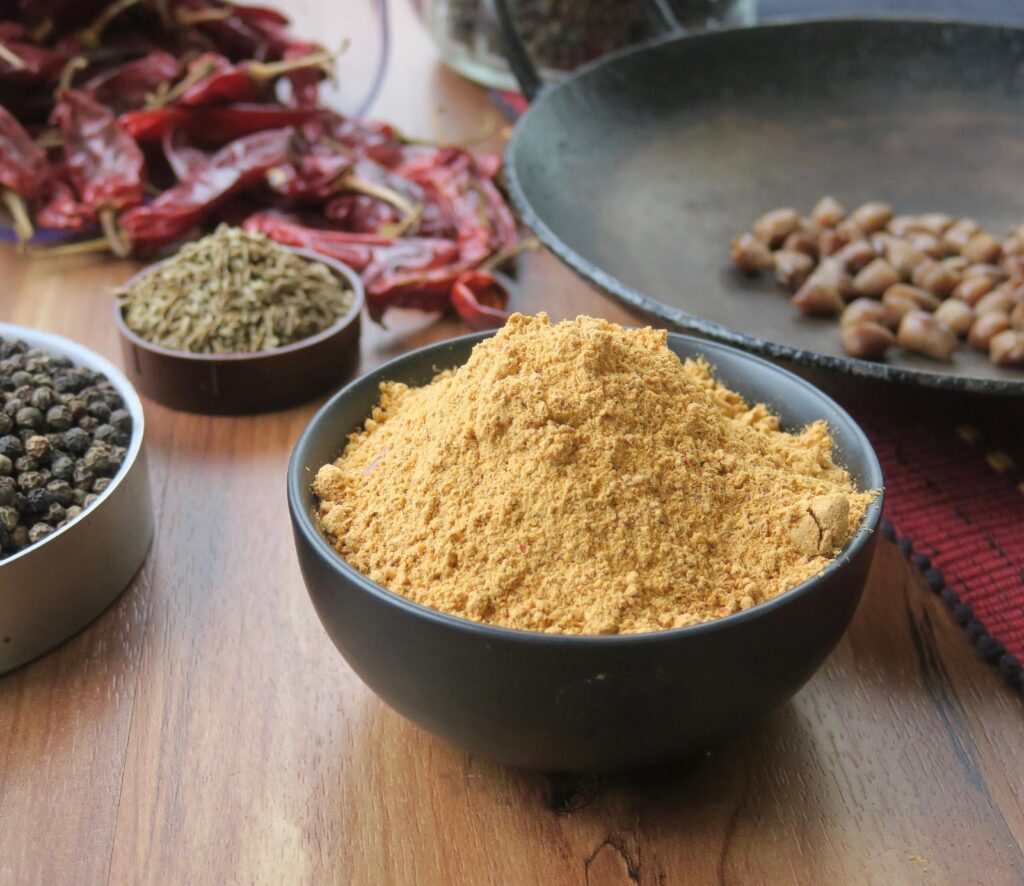
Rasam is essentially a tomato soup. A tomato soup with so many variations, you can find a different ‘true’ version in every other South Indian household. There’s no ‘basic’ version; not all rasams even have tomatoes in them! From pepper rasams to pineapple rasams, there are a hundred different spins on this humble dish.

Equipment
No matter the version you choose, one thing stays the same, the equipment. For this recipe, we’re making a dry rasam powder blend and we’re going to blitz our tomatoes in a juicer. That calls for our favourite Wonderchef Sumo Mixer Grinder 1000! It’s got a special dry grinding jar that perfectly grinds coarse masalas like rasam and sambhar powder. The dry jar has these special blades that recreate the effect of stone grinding. If you haven’t tried stone ground masalas just know that it’s an oldie, but a goodie! Stone grinding leaves you with a spice mix that’s pounded and therefore a lot more flavourful. Your rasams and sambhars are only as good as your dry masala mix so I’d say this makes all the difference! I like to use the blending jar fitted with the fruit filter for this rasam recipe since it catches all the tomato seeds and skin resulting in a smooth and clear rasam! A cast iron pan is a great addition to any kitchen. It conducts heat more evenly and also holds heat for longer. The 20cm Forza Cast Iron Pan is perfect for roasting the spices for rasam powder and so much more! If you don’t have one you can use a non-stick, but you might have to roast your spices for about 30 seconds – 1 minute longer.
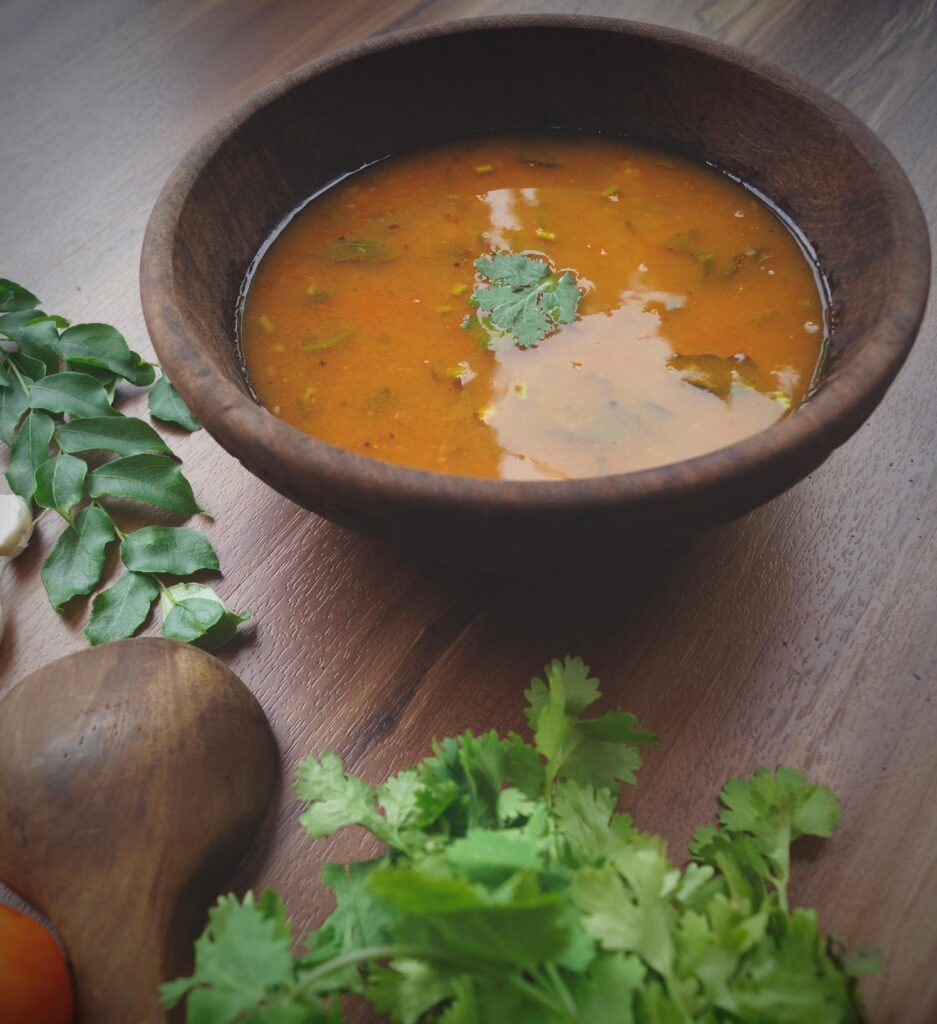
I personally think sour desi tomatoes are the best variety of tomato for rasam. Hybrid tomatoes are usually sweeter. Of course, if you insist on using a sweeter variety you could just add more tamarind to balance out the flavour. I would argue that perhaps tomato rasam could be the original, but there are so many different tomato rasam versions as well! Some rasams are dal heavy, some have more tomato pulp, some don’t use tamarind at all, the variations go on and on. The ratios of ingredients can completely alter your rasam. Remember that’s alright, not ruin. I don’t believe there’s any wrong version of rasam!
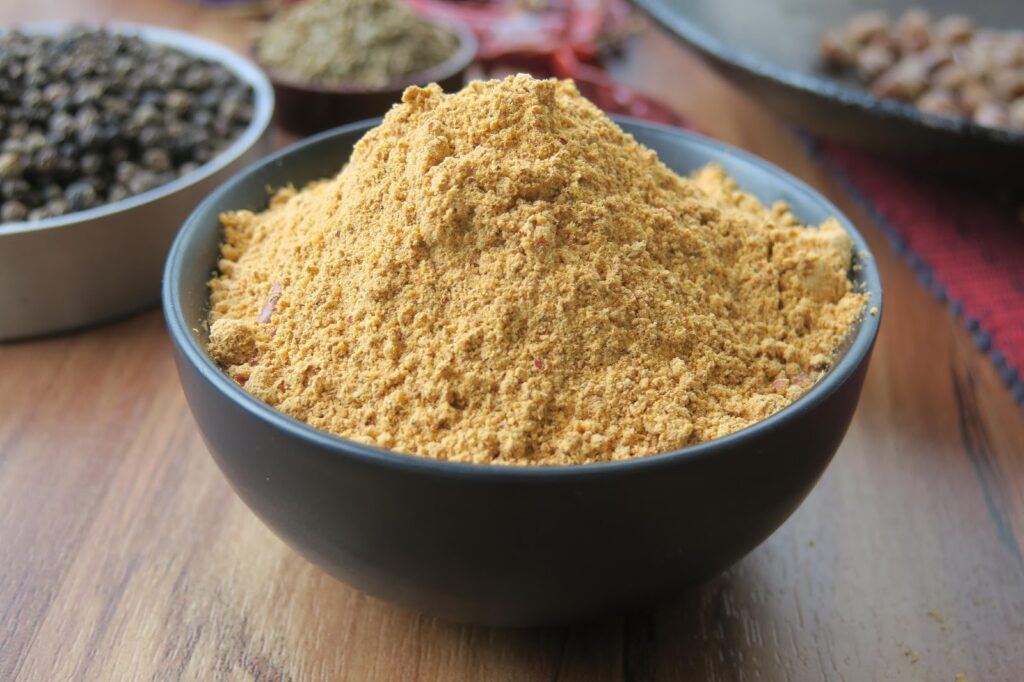
Let’s talk about rasam powders. I know it’s available in stores but I would strongly, strongly recommend making your own rasam powder. Like I’ve said before, it makes all the difference and it’ll keep for a good five to six weeks.The recipe below makes enough for three rounds!
While this is definitely not going to be the last rasam recipe I pen down, I’ve chosen to feature my current favourite – garlic rasam. I LOVE garlic and this recipe uses raw garlic for an intense hit of flavour. If you’re not keen on the raw garlic, you can leave it out, but don’t knock it till you try it!

Just remember, when it comes to rasam, there’s no right or wrong, just your version. Which is obviously the best!
Cooking Time: 20 min (Rasam Powder) + 20 min (Rasam)
Serves 4
Ingredients
For the Rasam Powder
- 5 Dry Red Chillies
- 2 Tbsp Toor Dal (Split Pigeon Pea)
- 1/2 Tbsp Whole Black Pepper
- 1/2 Tbsp Jeera (Whole Cumin)
- 1 tsp Hing (Asafoetida)
For the Rasam
- 4 Tomatoes (chopped)
- 3 cups Water
- 1 tsp Ghee
- 1/2 tsp Mustard Seeds
- 2 Sprigs Curry Leaves
- 3 Sprigs Coriander Leaves
- 1 Tbsp Rasam Powder
- 1/2 tsp Turmeric
- 1/2 tsp Salt
- 1/4 tsp Tamarind Paste
- 3 Tbsp Cooked Toor Dal
- 4 Pods Garlic
Instructions
Rasam Powder:
- Remove the stems from the dried red chillies and dry roast on medium heat in a cast iron pan for 30 seconds
- Add the toor dal and black pepper.
- Turn the heat up to high and roast while constantly stirring for a minute and a half.
- The mix should smell awesome by now*
- Turn the heat to low and continue to roast for 30 seconds.
- Add the jeera and roast for another 30 seconds.
- Turn the heat off and add the hing powder.
- Let the mix cool before grinding to a fine powder.
Rasam:
- Roughly chop the four tomatoes and blend along with 1/2 cup water.
- In a deep pan add ghee and once hot, add the mustard and curry leaves.
- Once the mustard has popped, add 1/2 cup of hot water to the pan. (This is done to prevent the tomato mixture from splashing around!) Reduce the heat to low.
- Strain the tomato mix into the pan.
- Return the pulp to the blender and blend the pulp again with 1/2 cup water.
- Strain the tomato mix into the pan.
- Repeat the above step with 1/4 cup water and discard the remaining pulp.
- Add the rasam powder, asafoetida, salt and tamarind paste to the pan.
- Leave the rasam on low heat while you mash the dal with 1/2 cup of water. You can do this with the back of a spoon, a blender or just your hands.
- Strain the dal and add only the water to the rasam.
- Repeat this process with 1/2 cup of water.
- Crush the garlic with a mortar and pestle or the back of a knife. Roughly chop and add to the rasam.
- Check the consistency** and add a little more water if desired.
- Roughly chop the coriander leaves and add to the rasam.
- Taste for salt and adjust accordingly.
- Turn the heat up and let the rasam boil for about 2-3 minutes.
Notes:
1. Just go by your eyes and your nose! Add your jeera once the dal has changed colour to a dusky rose-brown and roast everything together until you can smell the jeera!
2. Add more water if you want a lighter rasam. I wouldn’t go beyond 3/4th of a cup though. As always, taste, taste, taste and figure out what’s needed!
About the blogger
Sneha Sundar is the creator of You Dim Sum, You Lose Some; a philosophy she adopts both in and out of the kitchen!
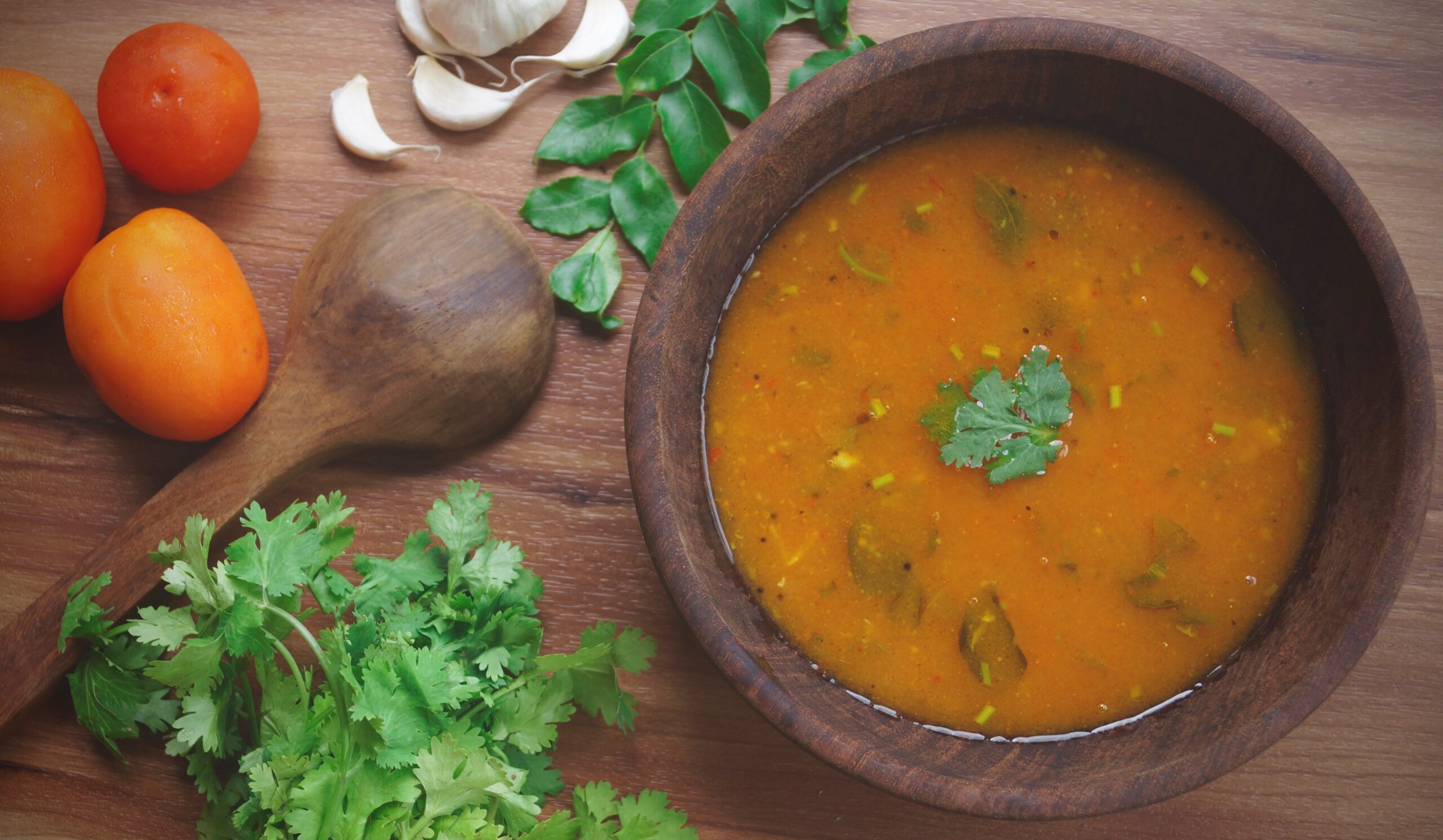

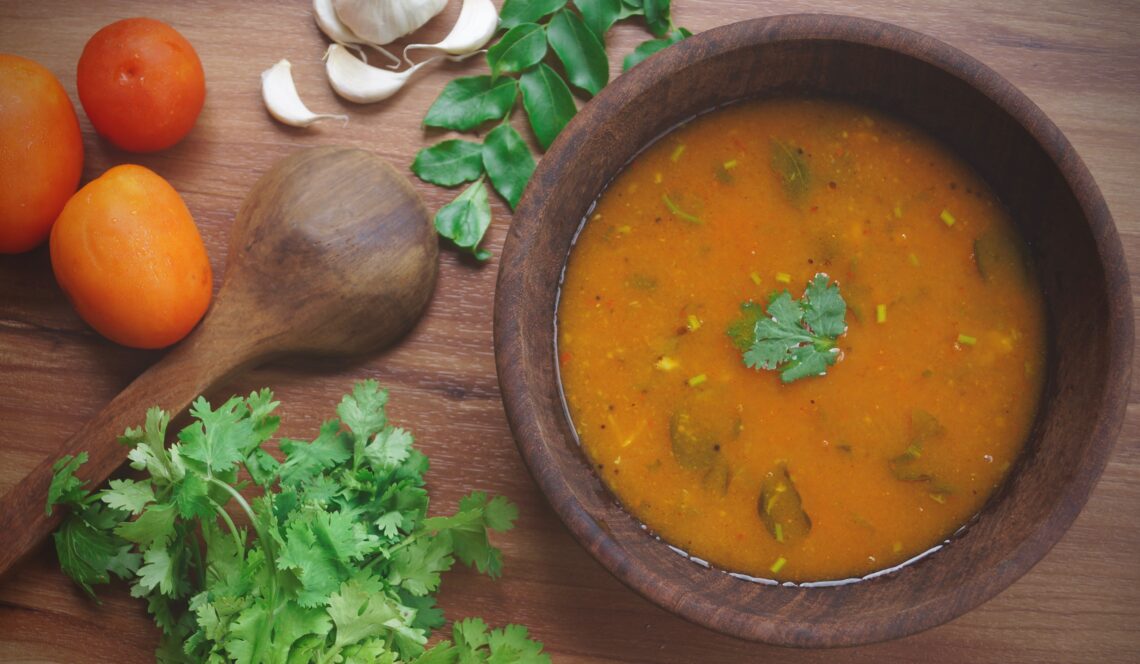

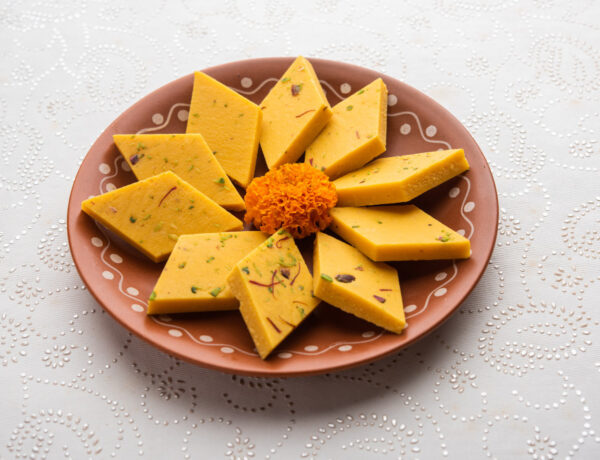
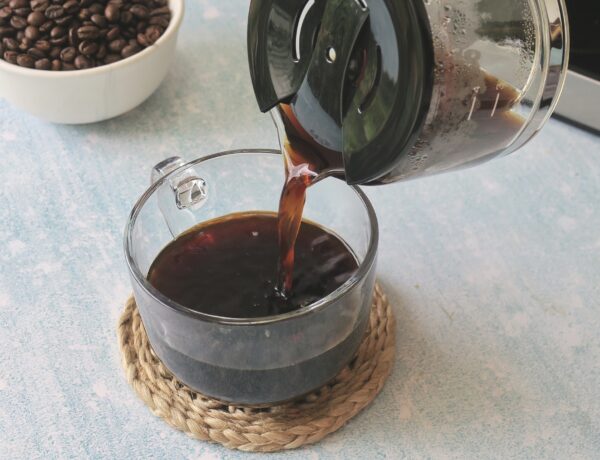
No Comments